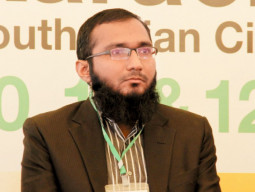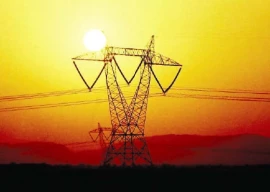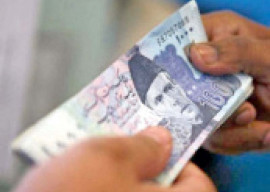
KARACHI:
Urban planners are convinced that Bus Rapid Transit is the solution to Karachi’s transport woes. But they offer little to persuade others why it is so.
On the second day of the South Asian Cities Conference at Frere Hall, the speakers agreed that cars are bad and buses are good. Even though all of them accepted that walking and cycling are even better, their presentations did little to support the two forms of transportation. In fact, the three letters - BRT - dominated the entire two-hour session, which began 45 minutes behind schedule.
Dr Muhammad Imran, a researcher, claimed that it is a misconception that increasing the strength or capacity of roads will lead to growth. In fact, he is working on research to show that more flyovers and underpasses do not necessarily lead to growth. “Even after the Ring Road was built in Lahore, traffic congestion and air pollution levels remain high,” he pointed out, as the Karachi audience smiled in agreement.
But Dr Imran quickly added that Karachi is no better. “There are huge investments in building roads, flyovers and underpasses but we have no money for public transport.” He explained this is mainly because of the strong political commitment - be it democratic or military — towards road investment. “It may come as a surprise but Pakistan’s policies on road investment have been fairly consistent across all governments,” he pointed out.
Due to this leaning towards better roads, planning for public transportation has found itself in the backseat in Pakistan. “It is very unfortunate that even a planned city like Islamabad does not have a mass public transit system,” he said.
His presentation ended, however, on a positive note as he pointed out all the opportunities that exist to help us bring closer to sustainable transport. For example, we cannot ignore the presence of international funding, political will, the required population density and an old railways network.
As Dr Imran made his exit, the stage was set for Lloyd Wright to launch into an entire presentation on the Bus Rapid Transit System — a concept the session was trying to sell vehemently. From less than 10 BRT systems in the world at the turn of the millennium, there are now 164 such systems, shared Wright.
“Many congratulations to Lahore for starting BRT,” he said, adding that this solution to public transport is far more affordable and quicker than other options. “If metro rail takes seven years, BRT systems take only three years to be set up.” This is what makes BRT popular among politicians who can finish the project within their term in government, he added.
For Karachi’s vast area, Wright showed low-entry vehicles with two-sided doorways that can be run along less popular routes and can be connected to the main lines. “People can easily join the buses on the main routes without being exposed to the weather or crime, and with no extra charges.”
The next two panellists were representatives of the Japan International Cooperation Agency (Jica), which has been involved in transport projects in Karachi and Lahore. The two shared statistics on the city’s forecasted population growth, master plans for Lyari and Malir expressways and the Karachi Circular Railway (KCR).
It was the KCR that made an audience member squirm in his seat until he was given the microphone. “Why is it that the KCR still remains in the planning phase when the BRT in Lahore was implemented within 11 months?” he asked Jica’s Pakistan representative Maki Suzuki. “We can assure you we are working very hard to get the project going but perhaps that is all I can say at this forum,” Suzuki replied, as various members of the audience passed each other knowing looks.
Published in The Express Tribune, January 12th, 2014.
COMMENTS (5)
Comments are moderated and generally will be posted if they are on-topic and not abusive.
For more information, please see our Comments FAQ




























































Bring MQM Mayor to fix the city's transport and infrastructure.
Hasn't any architect or town planner present in the south Asia cities conference took notice of the strange cage like structure enclosing Frere hall, which is supposed to cover the Frere hall and save it from the natural elements...the most grotesque and hideous of idea any one can come up with. All that is needed is to make the outer roof layer water proof, with a new roof, or repairs. If covered...this is no more Frere hall...its gone. it is like covering Arc de Triomphe in Paris with a tarpaulin or Teflon. Remove the metal frame and let the Frere hall in its original and pristine shape.
BRT is not the solution, its mere remedy for a much larger issue, as mentioned only benefit over mass rail transit, it can be completed in 2 years but it doesnt solve or can be compared to metro rail system. Thats what is required for all mega cities of Pakistan. BRT can only cope with medium size cities or in combination of metro rails. It can never be a solution as long term or environment friendly!
till mqm and ppp terrorize karachi, no progress will be seen, simple.
Why is it that the KCR still remains in the planning phase when the BRT in Lahore was implemented within 11 months?
Such is the fate of my city Karachi